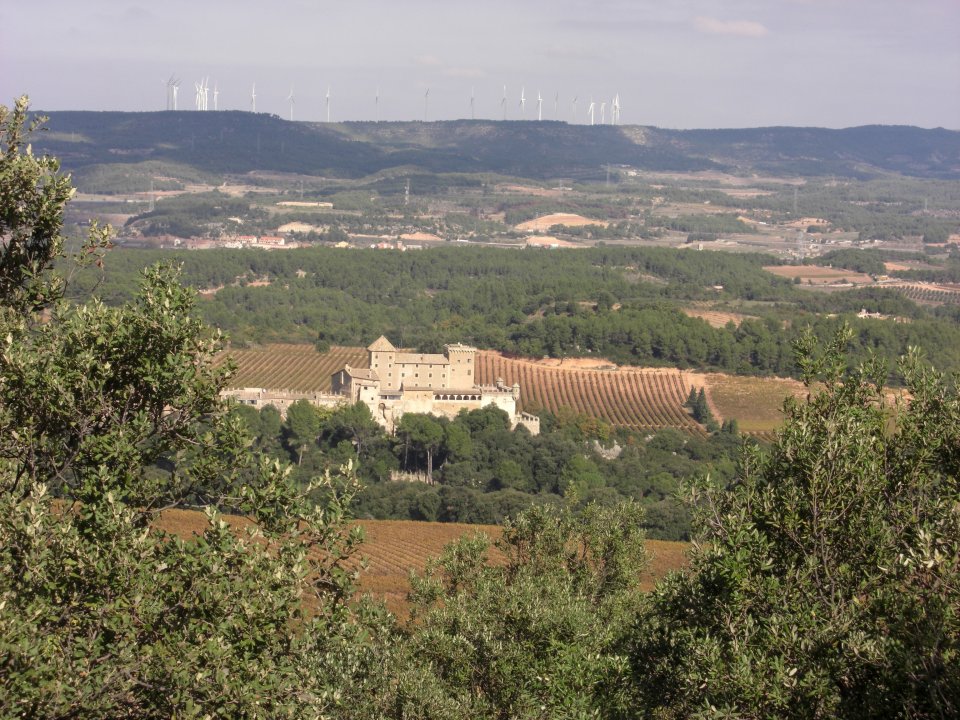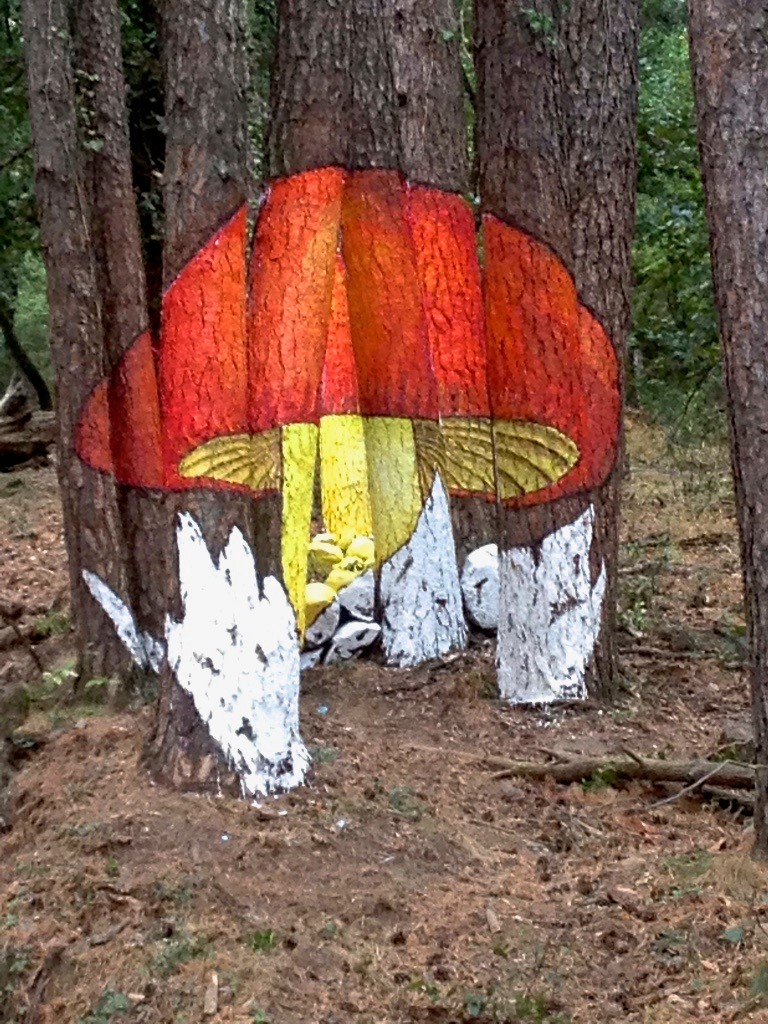
The Mycological Trail of Poblet has a double objective. On the one hand, the aim is to raise awareness among visitors about the mycological richness of the protected area targeting the most relevant fungal species, and on the other hand, to promote mycotourism in the area. The Mycological Trail is located in the conservation area of Poblet which is visited by thousands of mushroom pickers every autumn season.
Spain and particularly several regions such as Catalonia are passionate mushroom-lovers. Each Autumn, more than a million of people go mushroom hunting in the Catalonian forests . However, this massive affluence also has consequences on the forest ecosystem, such as erosion in steep areas. The managers of Poblet Forests decided to limit the access to the protected area to avoid these damages, but in return, they promoted the Mycological Trail, specially addressed to families.
The Mycological Trail has six mushroom segmented tree-paintings including the species Lactarius deliciosus, Amanita caesarea, Amanita phalloides, Tricholoma terreum, Macrolepiota procera and Ramaria aurea . All the paintings are painted on trees and can be seen from the trail, but only in his complete form, from a wooden platform. The visitors have different options, visiting all the paintings or just a few, depending on whether they choose a shorter or a longer loop. The Mycological Trail has free walking access for all the public, including the physically challenged. Motor vehicle access is restricted.
The Mycological Trail was designed through an open call. Different artists presented their proposals and finally the evaluation committee composed by members of the Board of the Poblet Protected Area and the Forest Sciences Center of Catalonia selected the proposal of Mr. Genís Colell. The paintings were painted near the main forest road, in order to facilitate the access to all the public. It is also recommended to install informative panels near the wooden observation platforms with an educational purpose. The panels include the main characteristics of the target fungal species, and also the important clues to distinguish it from other similar fungi.
The Mycological Trail of Poblet has become one of the main attractions of the Poblet Protected Area, regardless of the visitor’s knowledge of mycology. In fact, the number of paintings increased in a second phase (2014), expanding the original mycological path which was established in the year 2012. Today, the visitors have the option to select their own tour, choosing between a shorter walk or the complete Mycological Trail.
The next challenge of the Protected Area of Poblet is to develop economic activities related to the mycological resources. Currently, there is no offer of mycological guides who can share their fungal expertise with the visitors who wish to expand their knowledge of the many fungal species growing in the area. Similarly, local restaurants have not yet taken advantage of the mushroom richness to offer mycological based menus, which might be very attractive for the public and ultimately might generate incomes in rural areas.
Juan Martínez de Aragón, mtzda@ctfc.es, www.ctfc.es
Further information
Juan Martínez de Aragón

Painting of Amanita caesarea in the Mycological Trail of Poblet (Source: Juan Martínez de Aragón)
